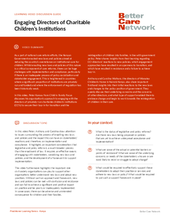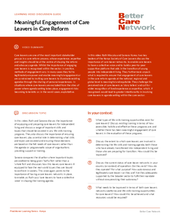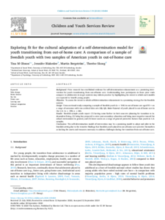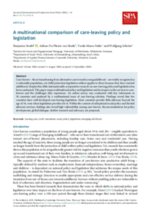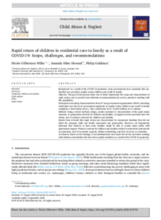Displaying 241 - 250 of 983
In this video, Peter Kamau from Child in Family Focus discusses his organisation’s approach to engaging with the directors of privately-run charitable children’s institutions (CCI’s) to secure their buy-in for transition and the reintegration of children into families, in line with government policy.
In this video, Ruth Wacuka and Samora Korea, two key leaders of the Kenya Society of Care Leavers, discuss the importance of care leaver networks, to enable care leavers to have a collective voice and to build a peer-to-peer supportive platform that aids in the transition of young people into independent living.
Prior research has established evidence for self-determination enhancement as a promising intervention for youth transitioning from out-of-home care. The purpose of this study was to assess the extent to which self-determination enhancement is a promising strategy for the Swedish context.
Based on three waves of semi-structured interviews, this longitudinal qualitative study aims to understand the transition from out-of-home care (OHC; foster care, residential care) to independent adulthood, for a group of Swedish care leavers aged 16 to 20 years.
This article explores the lived experiences of five fathers with care experience whose children remain in their care.
This paper maps multinational policy and legislation and its impact on the services to careleavers and the challenges they experience.
This paper aims to describe the experiences of youth preparing to age out of cluster foster care in South Africa.
The SOLID study aimed to investigate the feasibility of a definitive randomised controlled trial, comparing two behaviour change interventions to reduce risky substance use (illicit drugs and alcohol), and improve mental health, in young people in care.
The goal of the present study was to better understand the scope and characteristics of rapid return, and to provide data-informed recommendations for service providers working with this population.
This study examined how custodial grandmothers navigated the process of their grandchildren being reunified with a biological parent.

